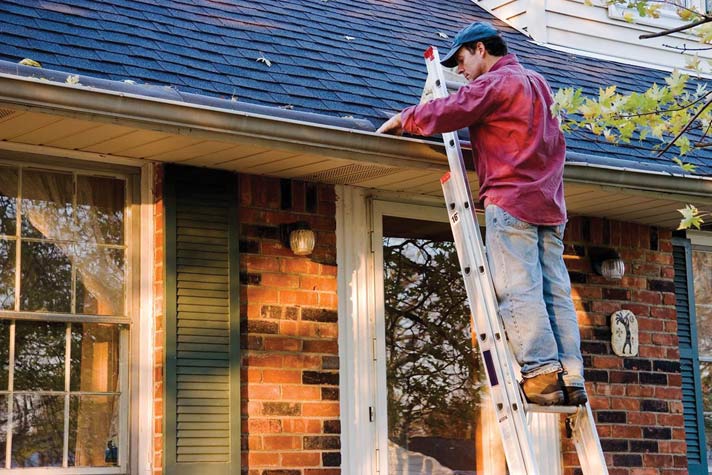Let’s Talk Real Estate – December 2016/January 2017
Now that the leaves are falling, you know snow and freezing temperatures will follow.Here are 9 things to get done before winter to prevent costly home repairs.
- Prevent plumbing freezes, protect outdoor faucets—A ruptured pipe can ruin your home and everything in it. Rupturing occurs when a pipe freezes and the water inside it expands. You can protect your exterior pipes by wrapping them with heat tape or add a faucet protector which can cost less than $10. Protect your interior pipes by ensuring your thermostat is never set below 50 degrees. Disconnect and drain garden hoses. If your exterior faucets aren’t self-draining, be sure to turn off the water manually at the shutoff valve inside the house so water doesn’t stand in the wall pipes. If you have an irrigation system, it’s important to make sure all the water has drained from the system before the first freeze. If you have a well, make sure the pipes in the well house are insulated, or make sure there is a heat source in the well house.
- Tune up your heating system—Don’t wait until the first cold snap to discover the heat isn’t going to work. Turn your furnace on and make sure it runs. If you have a monitor heater, make sure you have lots of heating fuel. Do not allow oil to run low—you run the risk of running out and freezing pipes. While you’re at it, don’t forget to replace the furnace filter, which cleans the air in your home.
- Fireplaces—What better way to beat the cold than the heat of a wood burning fireplace! Prep your fireplace by clearing out any debris that might be left over from last season, have the chimney cleaned once a year if you use it a lot. Lastly, be sure your fireplace screen is in good shape to shield your flooring from any flying sparks.
- Window air conditioners—You should not keep any air conditioners in the windows. If you do, remove them and replace the windows in their proper positions.
- Roof & gutters: don’t be lazy—Check your roof for loose or broken shingles. Be sure your gutters have been cleaned free of leaves, sticks and debris, so you will have proper drainage. It can be so tempting to skip gutter cleanups as winter nears. If it looks like you’re living inside a waterfall when it rains, water is bypassing your gutter system completely and may be directed to your foundation instead.
- Smoke detectors, fire extinguishers and carbon monoxide detectors—Test your detectors to make sure they work. Replace batteries if needed. Have spare batteries available.
- Fill in the gaps—Finding and filling the places where cold air sneaks into your home can drastically reduce your heating bills this winter. Cracks can be easily and inexpensively sealed with a simple tube of caulk, and it’s available in hundreds of colors to match your window panes, outside siding, and even brick. Not sure where to caulk? Look for visible cracks around:
- Window sills
- Baseboards
- Fireplace or dryer vents
- Anywhere something inside pokes a hole to the outside
- If you have a real chimney, don’t forget to close the damper to prevent cold air from billowing down and into your home.
- Get personal with thermostats—We all know we should, but we seem to have some mental block when it comes to programming our thermostats to align with our schedules. It’s not that hard and sometimes all it takes is buying a new one that suits you. Maybe you’ll like a wi-fi thermostat that’ll give you a little money-saving thrill each time you swipe your app or maybe you will like the Nest Thermostat that learns your temperature likes.
- Prep your yard—Your yard may take a beating this winter, but a little prep now can help your lawn be lush and green again once the warm weather comes back. Spend a few hours fertilizing and ridding your lawn of leaves now, and reap the benefits later.
